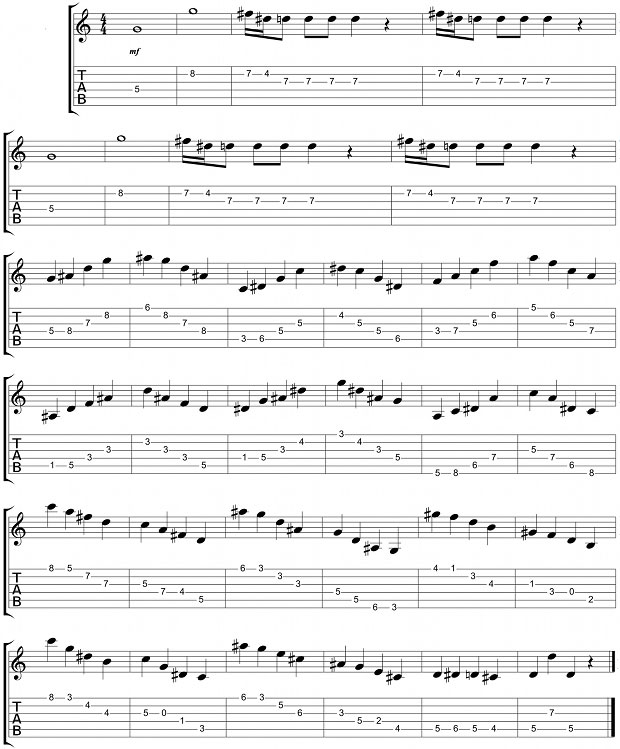Bent Out of Shape: Learning Mozart's Symphony No. 25 in G Minor, Part 7

Today we are going to learn Part 7 of Mozart's 25th Symphony in G Minor.
It's been a while since we started learning the piece, but we're getting very close to the end. To catch up on all the other parts of this lesson, look under RELATED CONTENT directly below my photo to the left.
You might remember me saying I was learning this piece with you, section by section. For that reason, it was difficult for me to predict how many lessons would be needed to cover the entire piece. I can now tell you that after this lesson, we'll need two more lessons to finish up.
Part 7 is very interesting because it relates very closely to Part 3. This new section follows the same themes within Part 3, but in a different relative key. Part 3 was based around Bb major, which is the relative major scale of G minor. Part 7, however, features the same themes but played in G minor and, in some sections, G harmonic minor.
We begin in bars 1 to 8 with an octave theme followed by a harmonic minor line that mirrors Part 3 exactly. This isn't technically challenging, but you might like to experiment with different styles of vibrato for the sustained octave notes.
As in Part 3, we now play a series of arpeggios outlining the following chord progression: G minor / C minor / F major / Bb major / Eb major / A diminished. These can be played in several different ways. I demonstrated for you in Part 3 the volume swell technique and also 16th-note tremolo picking. You might also like to play around with triplets or even double-picked 8th notes to see which you prefer. In the example, I play 16th-note tremolo picking, which isn't too difficult as long as you have a good alternate-picking technique.
To finish we play a sequence of descending arpeggios, which, for me, are the most challenging part of this section as you need to begin every arpeggio from the high E string. This can be difficult as you finish each arpeggios on the A or low E and then need to skip back to high E without interruption.
As with anything technically challenging on the guitar, start off slow to a metronome and gradually increase the tempo. Good luck and see you next week with Part 8!

Will Wallner is a guitarist from England who now lives in Los Angeles. He recently signed a solo deal with Polish record label Metal Mind Productions for the release of his debut album, which features influential musicians from hard rock and heavy metal. He also is the lead guitarist for White Wizzard (Earache Records) and toured Japan, the US and Canada in 2012. Follow Will on Facebook and Twitter.
Get The Pick Newsletter
All the latest guitar news, interviews, lessons, reviews, deals and more, direct to your inbox!
“There are so many sounds to be discovered when you get away from using a pick”: Jared James Nichols shows you how to add “snap, crackle and pop” to your playing with banjo rolls and string snaps
Don't let chord inversions bamboozle you. It's simply the case of shuffling the notes around







![Joe Bonamassa [left] wears a deep blue suit and polka-dotted shirt and plays his green refin Strat; the late Irish blues legend Rory Gallagher [right] screams and inflicts some punishment on his heavily worn number one Stratocaster.](https://cdn.mos.cms.futurecdn.net/cw28h7UBcTVfTLs7p7eiLe.jpg)


